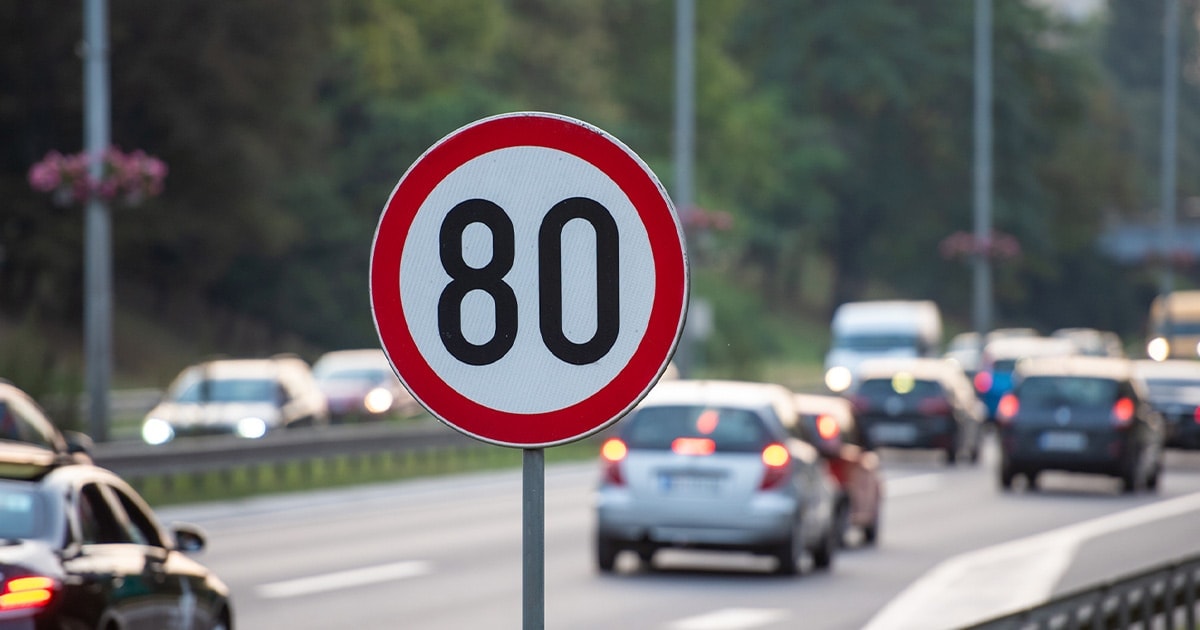
Pan-European legislation is rarely simple and the upcoming intelligent speed assistance regulations are no different. So, I asked TomTom’s in-house legal expert on the topic, Stephanie Leonard, what are some of the key things we need to know about ISA before it comes into force.
Intelligent speed assistance legislation is close to being ratified by EU lawmakers. As a result, when July 2022 rolls around all new vehicle models will need to feature technology that can actively warn drivers when they break the speed limit. Some ISA tech can also actively prevent the vehicle from exceeding the speed limit, too. We’re not quite there yet, though, there are still some months before it becomes law.
As TomTom’s Government and Regulatory affairs expert, Stephanie Leonard works closely on regulations such as ISA, what they mean for TomTom and its customers.
Question: Can you describe the process that ISA has gone through in terms of legal approval?
Stephanie Leonard: European regulators developed the ISA regulation through a fairly inclusive and transparent process. Before coming up with a draft proposal, a British consultancy called TRL (Transport Research Laboratory) conducted a comprehensive study to analyze the ISA market, the relevant ISA technologies, and the entire scope of speed restrictions across the EU. All of which took just under nine months.
Then, a dedicated forum of vehicle makers, automotive suppliers, road safety organizations and national governments worked together on the text of the regulation itself, deciding on things like applicable speed limit types, performance requirements and test procedures.
In total, there were about seven versions of the text that were elaborated over 13 months. At TomTom, we worked closely with other mapmakers, in both the dedicated forum and the TRL study, to explain how digital maps and speed limits can support ISA and be part of the regulatory requirements.
Once the European Commission was happy with the final text, they approved it at their end and then passed it over to the European Parliament and Council to approve – which is where it stands now.
Q: ISA legislation isn’t yet in force, that’s now officially coming in October even though it was originally slated for September, why was it delayed?
SL: There are two main approval phases for European regulation. We passed the first one over the summer and the second one is scheduled to be finalized by the end of October.
There is a short delay of two months, but that’s because the European Parliament didn’t have enough time to finish their part before the long summer recess. But this won’t have any impact on the main implementation dates of the regulation, they still say the same!
(Editor’s note: Indeed, while the approval process may have met a small delay, carmakers are still going to have to ensure all new vehicle types and models feature ISA tech from July 2022. All vehicle registrations will need the technology from 2024.)
Q: From a legal perspective, can you tell me what this means for drivers and carmakers alike?
SL: The regulation mandates the specific use of a speed limit technology inside cars but also light and heavy-duty trucks. If the technology is not fitted inside the vehicle, the maker is not allowed to sell it within the European market.
Drivers will be able to use a technology that warns them when they have exceeded the speed limit in a hope to reduce accidents and fatalities. This technology will come pre-installed in the car and drivers won’t have to pay anything for the first seven years.
Following the first seven years, the manufacturer is free to charge for the service, such as through a subscription model. For vehicle manufacturers, it means that they must fit their cars with this speed limit technology and choose which camera and map provider they want to work with to provide this technology.
(Cameras are used to detect speed limits from road signs alongside maps that have that information coded into them. Together, these technologies can inform drivers of the road’s speed limit in real-time.)
Q: When will vehicle makers need to start following the laws? And how will they be tested and made sure that they’re complying?
SL: The regulation follows a two-phase approach. Initially, only new car models that are brought into the EU market in June 2022 need to be fitted with ISA.
Then two years later, in 2024, all new cars that roll off the production line and are sold in the EU will need to be fitted with the same ISA system. Unlike some other vehicle regulations, cars do not have to be retrofitted with this technology – a new car bought in 2021 doesn’t need to be recalled by the carmaker to have an ISA system installed.
The testing for ISA technologies will go through what’s called ‘type approval’ – the rigorous testing procedure that manufacturers need to pass in order to sell their cars in the EU.
It’s been around for a long time and is well established, covering everything in the car from braking systems to emissions to seatbelts. The vehicle maker will determine which European country they want to carry out their test to obtain the type-approval certificate. The ISA test will be managed and overseen by the so-called type-approval authority and they will make sure that the car can correctly identify 90% of the speed limits along a 400-500km test route which will be a mix of motorways, highways and urban roads.
Q: What do you predict will be the next regulation after ISA; can we expect other driving functions to be regulated in Europe?
SL: My prediction is that ISA is just the beginning and more ADAS driving features will be regulated. Performance requirements will probably indirectly mandate the use of map technology in the coming years. Regulators will likely take a cautious approach though, as they need to gain acceptance and trust from the public they serve.
For example, from next year SAE Level 3 automated lane keeping technology will be allowed in vehicles, but only on motorways and only up to 60 kph (37 mph) – basically, only when there is heavy traffic.
Logically, the next stage would involve increasing the speed limit allowance and the type of roads the technology can be used on, i.e., up to 80 kph (50 mph) on motorways and urban roads. Maps are recognized as a core automated vehicle technology by regulators, but my job is to make sure that any requirements placed on the map are appropriate and technically feasible.
ISA tech is coming, and we need drivers to use it
ISA legislation is now on the final stretch to become enacted law. However, something we must remain mindful of is how drivers use it.
Intelligent speed assistants are not autonomous tech, rather they are, as their name suggests, an assistant. A technology to aid the driver and inform them of the speed limit when they might not be aware and a system to prevent them from accidentally exceeding it when their concentration wanes.
The tech is undeniably useful; however, drivers will have the option to turn it off. So, for it to have a positive and continued impact on road safety, drivers must use it. As ISA tech is only an assistant, drivers can overcome it by pushing through on the accelerator, or by ignoring its warnings. It’s not a totalitarian system. It’s likely that approach will help drivers see its benefit rather than seeing it as an intrusion into their cockpit.
It’s also hard to say what will happen after seven years have passed and carmakers can start charging for the service. Car and vehicle makers already charge for some digital services, so, charging for ISA won’t be unusual, however, how much it costs will certainly affect how many drivers continue to use it.
That’s the salient point here, if ISA is going to make our roads safer, we need drivers to use it and acknowledge its guidance while on the road.
People also read
)
Intelligent speed assistance systems are coming, next we need drivers to use them
)
The latest: What you need to know about intelligent speed assistant regulations
)
What’s next for ADAS
* Required field. By submitting your contact details to TomTom, you agree that we can contact you about marketing offers, newsletters, or to invite you to webinars and events. We could further personalize the content that you receive via cookies. You can unsubscribe at any time by the link included in our emails. Review our privacy policy. You can also browse our newsletter archive here.
)